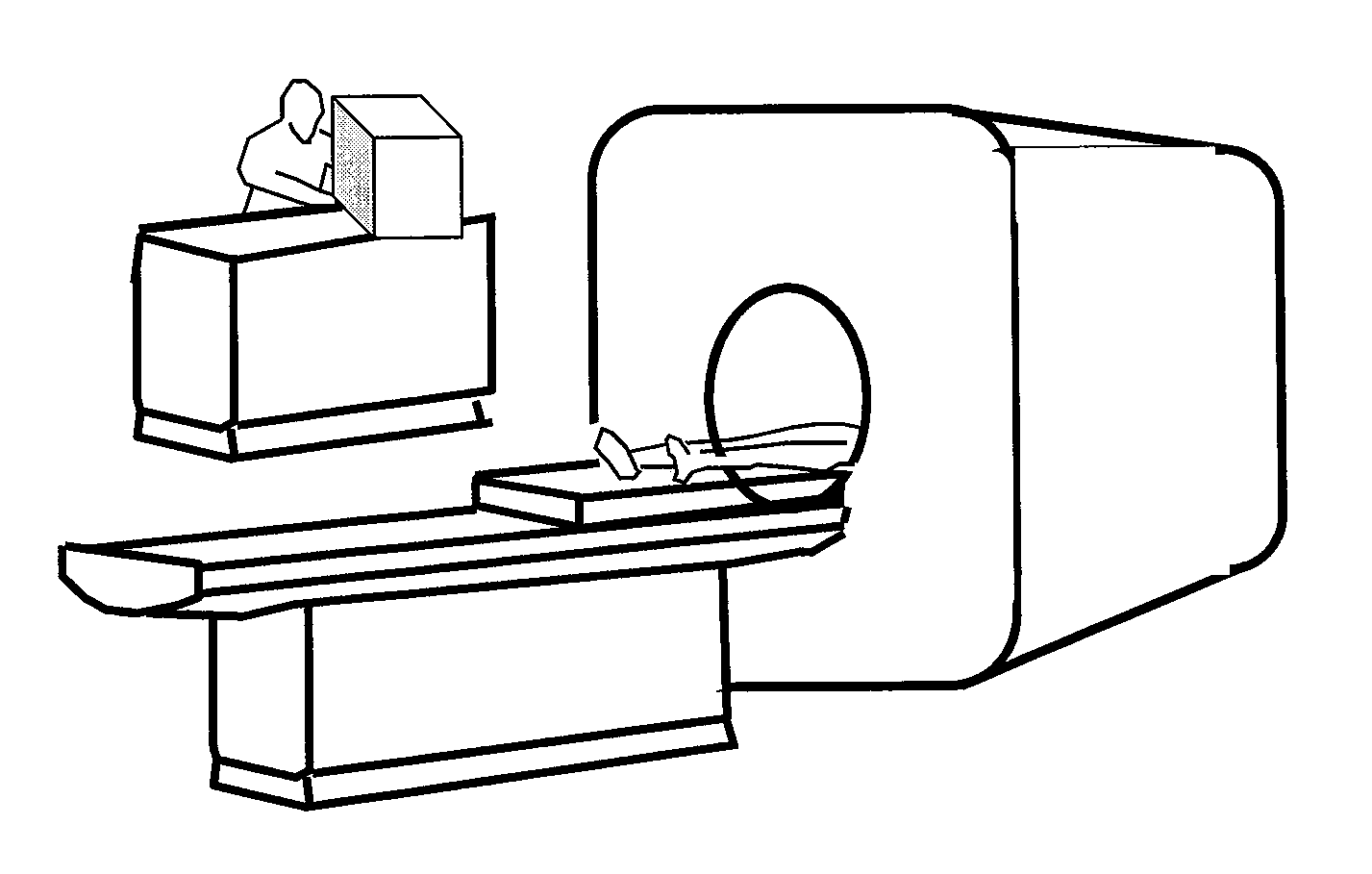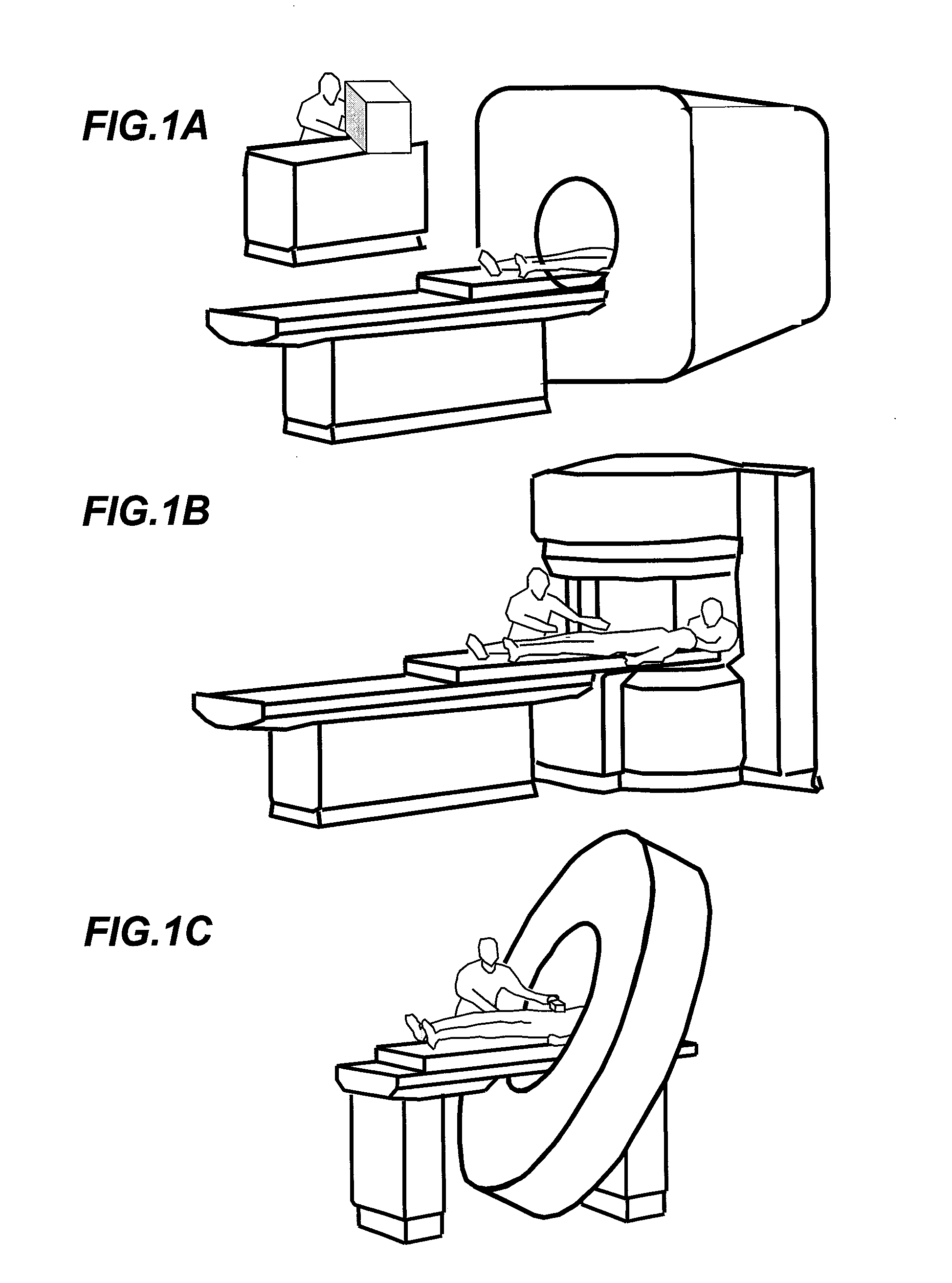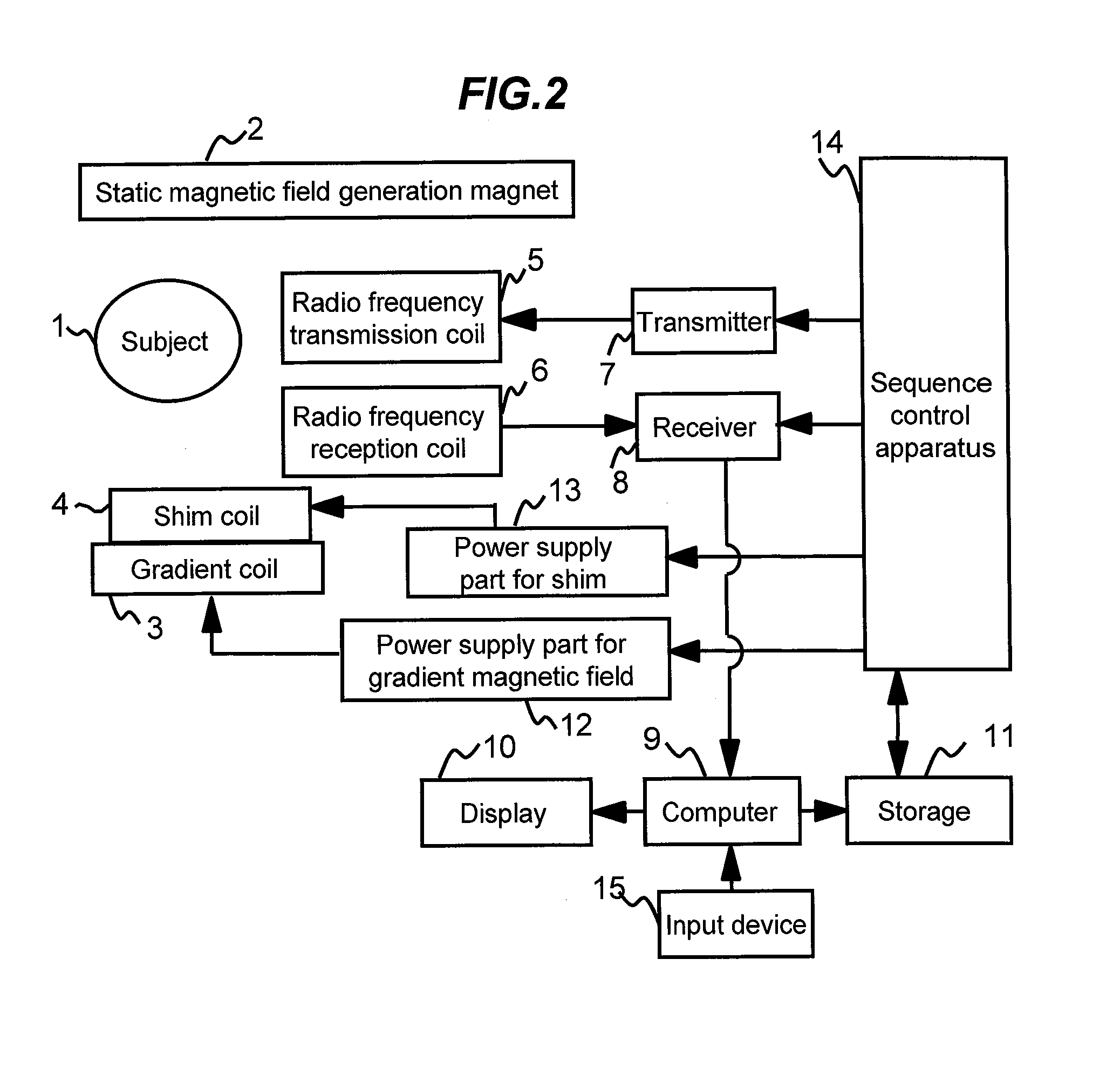Magnetic resonance imaging device
a magnetic resonance imaging and magnetic field technology, applied in the field of magnetic resonance imaging devices, can solve the problems of degrading image resolution, reducing the number of sampling points, prolonging the measurement time, etc., and achieves favorable water/fat separation and ease of measurement restrictions.
- Summary
- Abstract
- Description
- Claims
- Application Information
AI Technical Summary
Benefits of technology
Problems solved by technology
Method used
Image
Examples
Embodiment Construction
[0054]Hereafter, an embodiment of the MRI device of the present invention will be explained with reference to the drawings.
[0055]FIG. 1A to FIG. 1C show total configurations and external views of magnetic resonance imaging devices corresponding to embodiments of the present invention. FIG. 1A shows an MRI device of the horizontal magnetic field type utilizing a tunnel-shaped magnet that generates a static magnetic field with a solenoid coil. FIG. 1B shows an MRI device of the vertical magnetic field type utilizing a hamburger type (open type) magnet having separated upper and lower magnets in order to increase spaciousness. Further, FIG. 1C shows a tunnel type MRI device similar to that of FIG. 1A, but depth of the magnet is shortened and the magnet is leaned to increase spaciousness. The present invention can be applied to MRI devices of known structures including MRI devices of these configurations, but the present invention is not limited to these, and can be applied regardless o...
PUM
 Login to View More
Login to View More Abstract
Description
Claims
Application Information
 Login to View More
Login to View More - R&D
- Intellectual Property
- Life Sciences
- Materials
- Tech Scout
- Unparalleled Data Quality
- Higher Quality Content
- 60% Fewer Hallucinations
Browse by: Latest US Patents, China's latest patents, Technical Efficacy Thesaurus, Application Domain, Technology Topic, Popular Technical Reports.
© 2025 PatSnap. All rights reserved.Legal|Privacy policy|Modern Slavery Act Transparency Statement|Sitemap|About US| Contact US: help@patsnap.com



